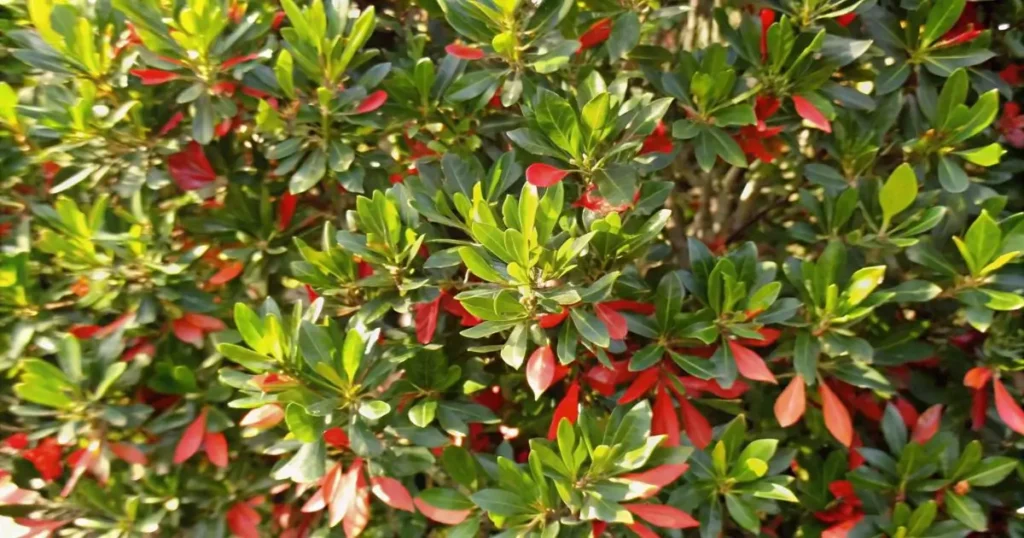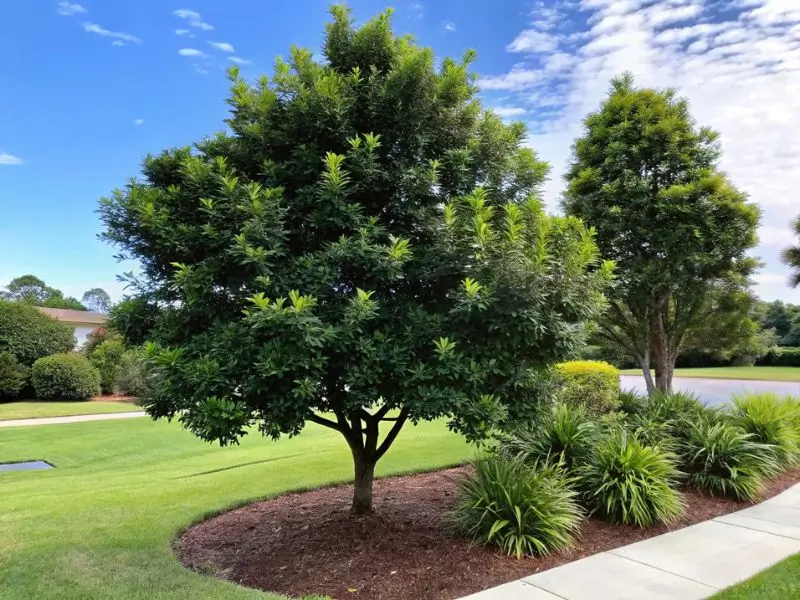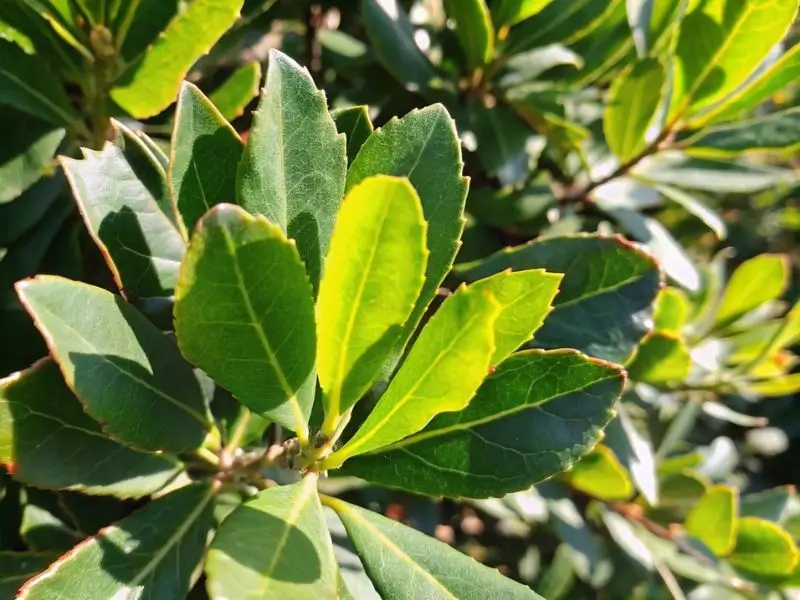
I’m a plant enthusiast who enjoys exploring nurseries and discussing yard ideas. This post answers a query: Is Japanese blueberry a good tree? and reveals its best features, planting tips, and aesthetic value. Using bite-sized paragraphs and bullet points, you’ll quickly judge whether it’s the right fit for your garden. Grab a refreshing drink, dive into this evergreen gem, and find out how easy it can be to care for.
Table of Contents
Understanding the Japanese Blueberry Tree
Origins and Background of Elaeocarpus decipiens
I first stumbled across the Japanese blueberry label when flipping through a nursery catalog. The images showed a glossy-leaved plant with ornamental fruits, and I couldn’t help but wonder, Is Japanese blueberry a good tree? Well, this leafy gem, also called Elaeocarpus decipiens, isn’t a fruit-bearing blueberry bush—but it sure looks intriguing.Let’s keep it short and sweet:
- Originates in specific regions across East Asia, particularly Japan and China.
- Sometimes called “Japanese bluebead.”
- Popular in warmer zones for its evergreen appeal.
I’ve noticed it typically thrives in mild climates with moderate moisture. If you’re in regions like Texas or Florida, you’ve probably seen these bright, polished leaves lining driveways.
Common Names and Botanical Classification
Though “Japanese blueberry” is its most common nickname, don’t be fooled. It’s not your pancake-worthy berry bush—still, people often ask the question: Is Japanese blueberry a good tree? I’ve found it belongs to the Elaeocarpaceae family and stands out for its year-round greenery.
- Known as an evergreen shade tree.
- Nicknamed for those small, bluish-black fruit clusters.
- Favored in landscaping thanks to moderate maintenance needs.
If you see it listed under Elaeocarpus decipiens at the nursery, that’s the same plant. Folks love it for its sleek look, which helps answer, Is Japanese blueberry a good tree? in the affirmative for many landscapes.
Is Japanese Blueberry a Good Tree for Your Landscape?
Evaluating Its Overall Appeal and Aesthetics
Let’s break it down: Is Japanese blueberry a good tree? If you want a lush, oval-shaped canopy that stays green all year, I’d say absolutely. The leaves start off bronze-red before maturing to a deep green, showcasing a neat color change. When pruned and shaped, these trees look uniform—perfect for those crisp, manicured yards.Key highlights of its appeal:
- Dense, glossy foliage that offers shade and structure.
- Grows between 20 and 30 feet tall (when conditions are right).
- Bronze-tinted new leaves for a subtle yet pleasing shift.
Because people often repeat the inquiry, Is Japanese blueberry a good tree?, I like to let them know it brings an elegant vibe without excessive work. If you’re aiming for curb appeal, it’s hard to go wrong here.
The Role of Japanese Blueberry in Eco-Friendly Gardening
When folks chat about “greener” yards, I often hear: Is Japanese blueberry a good tree? from an eco-friendly angle. It provides shade that helps soil retain moisture, which in turn can reduce your water usage. It might not be a native tree in many regions, but it’s rarely invasive and does offer benefits:
- Leaves that remain year-round, stabilizing soil and reducing evaporation.
- Occasional fruit that birds may nibble.
- Minimal pruning, so fewer chemicals or water needed if cared for properly.
For many homeowners, “Is Japanese blueberry a good tree?” becomes a yes once they see how it balances evergreen beauty with relatively low demands.
Key Features and Identification

Leaf Structure, Foliage Colors, and Seasonal Changes
If you’re curious and thinking, Is Japanese blueberry a good tree?, look at its leathery leaves. They’re elliptical, often starting with a coppery or red tint and transitioning into deep green. Unlike deciduous trees, it won’t go bare in winter.Identifying traits:
- Ovoid or columnar canopy if pruned well.
- Consistently green foliage year-round.
- Light leaf drop, but generally stays lush even in cooler months.
This dependable coverage is a huge draw for people in mild climates, prompting them to exclaim, Is Japanese blueberry a good tree? once they see how stable it remains throughout the seasons.
Flowering, Fruiting, and Understanding the Blue “Berries”
Despite the “blueberry” name, this is no edible crop. The bell-shaped white flowers mature into tiny dark fruits. They’re ornamental fruit clusters that you’ll likely leave for the birds rather than for breakfast.
- White, dainty blooms in small bunches.
- Bluish-black fruits that appear post-bloom.
- Non-edible for humans but visually interesting.
This tree’s name makes everyone ask, Is Japanese blueberry a good tree?—they wonder if they’ll get a harvest. The fruit is mostly ornamental. Still, the tree’s evergreen nature more than compensates for the lack of edible berries.
Growth Habits and Environmental Requirements
Ideal Climate, Sunlight, and Soil Conditions
You might still be thinking, Is Japanese blueberry a good tree? if your region sees temperature dips. It thrives best in USDA zones 8 through 11, so moderate winters are key. It also appreciates full or partial sun.
- Needs well-draining soil to avoid root rot.
- Chilly climates below zone 8 could stress it out.
- Partial shade may help in scorching zones.
I’ve had success planting it where afternoon shade offers relief from brutal sun. Try to ensure adequate soil drainage because soggy roots are a no-go.
(Need more growing pointers? Check out this Japanese Blueberry Tree page for a deeper look.)
Watering Schedules and Fertilization Needs
Once established, it shows decent drought tolerance, but young trees require consistent moisture. Always keep an eye on the soil to avoid letting it dry out completely.
- Water weekly in hot seasons for the first couple of years.
- Mulch around the base to maintain stable soil moisture.
- Use a balanced fertilizer sparingly once or twice per year.
By now, you’re probably nodding if you asked, Is Japanese blueberry a good tree? The maintenance routine isn’t too tough, so it’s a thumbs-up for a lot of gardeners.
Planting and Propagation Methods

Best Practices for Planting a Japanese Blueberry Tree
Another angle many folks explore is, Is Japanese blueberry a good tree? in terms of easy planting. Generally, yes! Here’s a quick breakdown:
- Choose the Right Time: Spring or fall, when temps are milder.
- Dig a Wide Hole: About twice the width of the root ball.
- Position Correctly: Keep the root-collar at or slightly above ground level.
- Backfill Gently: Use native soil mixed with organic matter.
- Water Thoroughly: Soak right after planting to settle the soil.
For official guidelines on planting in different regions, check out the USDA’s gardening resources. It’s a reliable place to confirm if your zone can handle the temperatures.
Propagation Through Seeds, Cuttings, and Nursery Saplings
Want to go the slow-and-steady route? You can try seeds, though germination might be spotty. Semi-hardwood cuttings in a rooting medium can also work. Personally, I prefer nursery-grown saplings for a quicker payoff. If you’re prone to asking yourself, Is Japanese blueberry a good tree?—starting with an established young plant often offers an instant “yes.”
- Seeds: Possibly long germination times.
- Cuttings: Needs patience and suitable conditions.
- Saplings: Easiest way to guarantee success.
Landscaping Uses and Design Ideas
Ornamental Value in Different Garden Styles
“Is Japanese blueberry a good tree?” also ties into landscaping style. It’s versatile, so you’ll see this tree in both formal and relaxed settings. Want a row of uniform trees along the driveway? Perfect. Prefer a standalone specimen? Also good.Possible uses:
- Lining boundaries or pathways.
- Framing a front entrance.
- Complementing other colorful shrubs and flowers.
If you’re brainstorming Landscape design ideas with Japanese Blueberry, consider pairing it with bright blooms that pop against its dark foliage. The constant question—Is Japanese blueberry a good tree?—usually fades as soon as folks see how well it fits in different designs.
Companion Plants and Successful Pairings
For a dynamic display, team it up with plants having lighter or smaller leaves:
- Hostas or ferns that enjoy partial shade under the canopy.
- Ornamental grasses for added texture and movement.
- Bright annuals or perennials like impatiens, marigolds, or hydrangeas.
I’ve witnessed countless queries—Is Japanese blueberry a good tree?—and they all taper off once people spot how well it mingles with various plant neighbors.
Maintenance and Pruning Tips
Seasonal Care and Common Pruning Techniques
You might think, Is Japanese blueberry a good tree? if you dislike heavy maintenance. Good news: it’s quite manageable. A quick pruning session once or twice a year generally does the trick. Remove dead or crossing branches all year if necessary.
- Tip 1: Keep your pruning tools clean to prevent disease.
- Tip 2: Never remove more than one-third of the canopy at a time.
- Tip 3: Focus on shaping it to maintain that neat, evergreen silhouette.
Short bullet points and minimal fuss—I personally say their ease of care answers the question, Is Japanese blueberry a good tree? with a strong yes.
Achieving Desired Shapes and Managing Growth
For shape options, try a columnar hedge, giving you privacy along a fence line. Or let it form a simple, natural oval. Some people even prune it “lollipop style” with a bare trunk and rounded top.
- Columnar hedge: Space them out, trim sides lightly.
- Topiary flair: Tidy spheres or cone shapes for a showy look.
- Casual form: Just remove dead growth and let the shape develop naturally.
Again, the adaptability here is remarkable, sealing the deal for many who ask, Is Japanese blueberry a good tree?
Common Pests, Diseases, and Troubleshooting

Recognizing Insects, Fungal Issues, and Their Impact
No tree is forever immune to pests. Even so, if you wonder, Is Japanese blueberry a good tree? from a pest standpoint, it’s relatively hardy. Scale insects or fungal spots can happen, especially if conditions are damp. Keep watch for:
- Sticky residue (scale or aphids).
- Yellow or brown spots on leaves.
- Overly soggy soil that invites rot.
Address issues fast: a mild insecticidal soap or organic solution often does the trick. Good airflow and well-draining soil are your best line of defense.
Preventive Measures and Organic Treatment Options
I prefer organic methods for general yard care. Neem oil or horticultural oils can tackle scale, while proper watering habits reduce fungus risk. Some guidelines:
- Water at the base to keep leaves dry.
- Prune to increase airflow in the canopy.
- Introduce beneficial insects (ladybugs) if aphids show up.
Once people see how straightforward prevention is, they confirm, Is Japanese blueberry a good tree? Absolutely—lack of major pest troubles is a huge plus.
FAQs
How Fast Does a Japanese Blueberry Tree Grow?
If you’re short on patience, Is Japanese blueberry a good tree? from a growth-speed viewpoint? It’s moderate, about a foot of growth per year. That’s quick enough to enjoy visible progress, yet tame enough to avoid constant pruning.
Can the Fruits of the Japanese Blueberry Be Eaten?
Short answer: not recommended. They’re not harmful under normal circumstances, but they’re definitely not your typical snack. So, if you love actual blueberries, you might still ask, Is Japanese blueberry a good tree?, and the answer remains yes—just not for edible fruit.
Are Japanese Blueberry Trees Messy?
Compared to heavily shedding oaks or maples, it’s not particularly messy. A bit of leaf drop and the small fruits may fall, but it’s manageable. Minimal debris means people often say “yes” when asked, Is Japanese blueberry a good tree? for tidy yards.
Do Japanese Blueberry Trees Require a Lot of Maintenance?
Nope—once established, you water moderately, prune lightly, and check for pests on occasion. People frequently cite low labor needs as their top reason for answering, Is Japanese blueberry a good tree? with an enthusiastic “yes.”
Conclusion: Is Japanese Blueberry a Good Tree?
Recap of Benefits and Drawbacks
So, after all these details, we circle back: Is Japanese blueberry a good tree? If you live in zones 8–11, value evergreen coverage, and want moderate care, you’ll love it. If you need edible berries or extreme cold hardiness, you’ll want another plant.
Pros:
- Evergreen shade tree with glossy leaves.
- Adaptable for various landscape styles.
- Low-maintenance ornamental once established.
Cons:
- Not suitable for severe winters.
- Fruits are ornamental, not edible.
- Requires watchful watering early on.
Despite any minor drawbacks, the evergreen charm is enough for many to say, Is Japanese blueberry a good tree?—“Heck yes!”
Final Verdict on the Value of Japanese Blueberry in Landscaping
Yes. If you live in a mild climate, this tree supplies lush, evergreen coverage, demands minimal upkeep, and brings a pleasant aesthetic to your landscape. Though you won’t be harvesting its fruit, the consistent greenery, flexible shaping options, and limited pest problems appeal to busy gardeners. Give it a neat trim to maintain a formal look or let its natural structure flourish. All in all, it’s a dependable, polished choice that enhances outdoor spaces while rewarding even modest care.

2 thoughts on “Is Japanese Blueberry a Good Tree?”
Comments are closed.